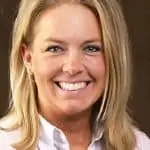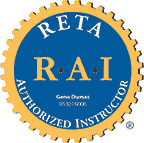

The new Exceedance Response Action (ERA) paradigm has wide-reaching implications for future NPDES permittees of industrial stormwater discharges. This growing regulatory compliance mechanism is already being implemented in California, Washington, and most recently in Oregon. These states are viewed as precursors of future trends throughout the United States, as several key components of the forthcoming Multi-Sector General Permit (MSGP) will influence other states to move toward similar ERA response scenarios and regulations.
Join Forester University for this live, educational, two-part webinar as speaker Jonathan Meronek, QISP ToR, CPESC, QSDP/D, of SCS Engineers discusses the future of the tiered ERA paradigm and why stormwater managers and facility compliance personnel have only begun to come to terms with it. He will help you better understand if your site is covered and how an Industrial Permittee can come into compliance.
The webinar will examine past lessons, including the implementation of effective best management practices, water quality characterizations, and successful compliance strategies. It will also project what the compliance paradigm will look like during the first years of an industrial General NPDES Permit.
Attendees can expect to learn to:
Attendees can expect to earn credits: 2 PDH / 0.2 CEU
We will continue to see changes on the federal, state and local regulatory front that together will help us manage storm water in a smart, cost-effective manner preserving our water resources. Betsy Powers of SCS Engineers provides an update in her most recent article.
Until a new WOTUS definition is finalized, the U.S. EPA and the U.S. Department of the Army have indicated their intent to re-codify the pre-Obama regulations. The revised WOTUS rule is expected to include looser regulatory requirements, meaning fewer waters will qualify, and therefore, fewer permits will be required.
To speed up approvals of permits for highways, bridges, pipelines and other major infrastructure, an Obama-era executive order aimed at reducing exposure to flooding, sea level rise and other consequences of climate change were rolled back reducing the environmental reviews and restrictions on government-funded building projects in flood-prone areas.
Removing phosphorus from storm water runoff is a hot topic, with partners exploring alternative opportunities to reduce the introduction of phosphorus in runoff, remove it or manage it in watersheds.
More proprietary filters are being used for pretreatment before underground infiltration for redevelopment sites for total suspended solids (TSS) control and where land is limited. The performance of proprietary devices continues to be studied and improved to meet regulatory requirements. Increasing general attention is being paid to emerging contaminants that are problematic in storm water runoff. Among the emerging contaminants of concern are pharmaceutical and personal care products, pesticides, hydrocarbons, and hormones. Many of which are now included within the Endocrine Disrupting Chemicals group.

Betsy Powers is a civil and environmental engineer with SCS Engineers.
By asking good questions Chris Jimieson, PE, Senior Geological Engineer at SCS Engineers challenges his clients to think critically about how their facility could be better prepared to navigate a spill response. The answers help a facility’s spill contingency plan become more tailored to best serve that particular facility while meeting the necessary regulatory requirements.
Each facility is different, so the best means of preparedness should fit the operational structure and practices of the facility to ultimately limit your facility’s potential vulnerability during a spill. Chris takes his readers through several examples and ideas of useful tools and processes that help them become better prepared, such as adding infographics as attachments to a spill contingency plan.
His advice is directed toward the printing industry but is applicable in many industries.
Read: Upgrade Your Facility’s Spill Contingency Planning
 Refrigeration Training and Certification Programs
Refrigeration Training and Certification ProgramsSCS has a diverse staff of certified engineers, scientists, and technicians who provide practical, cost-effective training on-site or in one of our nationwide sessions. We use training materials from RETA, IIAR, manufacturers, and field experience, as well as facility-specific standard operating procedures. See our training schedule and complete information here.
SCS’s Refrigeration Operator I & II Training Programs use the applicable RETA Industrial Refrigeration (IR) 1 & 2 manuals which are included for the duration of the classes. These intensive four-day classes are provided in locations across the nation; convenient for attendees to participate locally.
Operator I: Designed for the beginning refrigeration operator, manager, and/or safety personnel with limited refrigeration training.
Operator II: Designed for the refrigeration operator, manager, and safety personnel who have passed the Operator I class and have a higher level of experience and knowledge in industrial refrigeration systems using ammonia as a refrigerant.
PSM/RMP Introduction Class: Training course using ammonia refrigeration-focused material specific to your PSM/RMP program and facility using RETA, IIAR, manufacturers, and field materials as well as facility-specific standard operating procedures. We highlight the responsibilities of the various PSM/RMP Team Members that may include, but not be limited to, maintenance, safety, management, environmental, and/or facilities personnel:
PSM/RMP Advanced Class: Training course for experienced PSM Program Managers, Plant Managers, facility compliance personnel, and safety-EHS staff who want a detailed review of the more complex regulatory requirements included in the PSM and RMP regulations. The class focuses on the complex details of the following elements: Process Safety Information (RAGAGEP), Standard Operating Procedures, Management of Change (Project planning through PSSR), and Mechanical Integrity.
RETA CARO/CIRO Review: This intensive training is designed for operators who are pursuing their RETA CARO or CIRO certification. Each course includes a review of the pertinent materials. During Day 2, participants receive a voucher to take the RETA Practice Test. Our instructor reviews the test results and customizes Day 3 to incorporate material that was found to be deficient within the testing.
See our training schedule and complete information here.
Of interest to industries concerned with wastewater ammonia treatment or landfill leachate ammonia treatment.
SCS Engineers publishes a new SCS Technical Bulletin entitled “Treatment of Ammonia in Wastewater and Leachate – Considerations and Technologies.”
Reducing the amount of ammonia in landfill leachate and other industrial wastewaters are often necessary to meet discharge standards. Proven wastewater treatment technologies can effectively reduce ammonia concentrations, but selecting the right technology requires careful consideration. This SCS Technical Bulletin provides background on ammonia in wastewater, and reviews factors to consider in selecting a treatment technology. The Bulletin includes a review of eight of the most common and effective treatment and disposal methods for wastewater with elevated ammonia or nitrogen.
Read or share the SCS Technical Bulletin here.
Explore SCS’s Liquids Management resources here.
Yes, we’re ready for another penetrating, piercing, sharp, bracing, brisk, crisp, invigorating, and rigorous RETA conference! This year SCS will be back with our game on and a great lineup with our colleagues…
If you missed Bill Lape’s The Best Little MOC Workshop in Texas catch him at the booth!
SCS Engineers announces today that they are a founding sponsor of WISR – Women in Solid Waste & Recycling. WISR is the first of its kind nonprofit organization created in 2017, dedicated to preparing women for leadership positions in the industry by organizing chapters in key industry centers and providing opportunities for networking, leadership development, career mapping and mentoring. SCS Engineers’ support will help establish education programs in leadership as well as contribute to the creation of new chapters in at least six cities by the end of 2019. WISR is in the process of forming chapters in key industry centers — including Los Angeles, New York City, and Atlanta — that will offer quarterly programs including professional development with skills training, site tours, networking and leadership training.
“We look forward to meeting with colleagues in the solid waste, recycling, and environmental services fields to share our scientific, financial, and technical knowledge to move sustainable waste management forward in the U.S.,” stated Michelle Leonard, a vice president of SCS Engineers. “WISR will help us make a difference; for women and for the industry.”
Thanks to those of you who joined SCS Engineers at the Iowa Recycling & Solid Waste Management Conference during our presentation on Dane County, Wisconsin’s successful construction and demolition (C&D) waste processing facility.
We’ve posted our C&D facility presentation online in a short video format.
For those who missed it, here is a quick recap of what helped make the facility a success. Dane County converted a C&D transfer station located at their landfill property into a fully operational C&D processing facility. A public-private partnership makes C&D recycling a more economically viable endeavor, by leveraging strengths among the public and private entities.
With a pricing structure that creates a strong incentive for LRR to recycle, more C&D is beneficially reused, and the County extends the life of its landfill.
SCS supported the County in this award-winning project by managing the design and construction of the facility. Want to discuss your C&D operations? Contact your SCS Engineers representative today, or visit our website that includes this and other case studies, whitepapers, articles, and events.
Thank you to the Iowa Recycling Association and Iowa Society of Solid Waste Operations for sponsoring another valuable conference. See you next year!
Air rules are complicated. Landfill emissions differ from typical industrial sources resulting in rules that vary in significant ways. If you’re a landfill owner responsible for compliance, a regulator charged with monitoring landfills, or new to the industry, join us for this informative Air & Waste Management Association live presentation. The webinar will help you will learn how the rules affect landfills, understand what must be submitted and when, and the steps to take for compliance.
An open dump refers to a land disposal site where solid waste is disposed of in a manner that does not protect the environment, is susceptible to open burning, and is exposed to the elements, vectors, and scavengers. Therefore, closing or upgrading open dumps to a sanitary landfill is a key issue for many communities worldwide.
In 1976, the passage of U.S. federal legislation known as RCRA pushed for the closure of open dumps and encouraged the development of modern sanitary landfills. In the 1990s, the U.S. EPA issued rules implementing such requirement. As a result, thousands of open dumps were closed.
The informative brochure “Closing Dumpsites,” is intended for many countries that are now beginning down the path to closing them with basic information of the process. Although U.S. dumps have been closed for many years with SCS providing post-closure and long-term care of these facilities, other countries can learn more about the long-term management of these facilities from our professionals nationwide by contacting us at .